
TP Security


Speaking of misleading health information, Barbara Delinsky has a gem in her book Sweet Salt Air. A woman in the story asks an overworked man, “When do you sleep?”
“When I’m tired,” he replies.
“Studies show that the less sleep you get, the greater your chance of stroke,” she warns.
“Studies get it backward,” he counters. “Insomnia is caused by stress, which causes high blood pressure, which causes stroke. I’m not stressed.”
This is another example of health information that “everyone knows,” but it’s not completely accurate. Even though a large percentage of people who have strokes might also have insomnia, the relationship between the two conditions is a correlation, not a cause-and-effect finding. The same is true of the studies that report people with more education have more migraine headaches. Education does not cause migraines, but it can provide a pathway to more stressful jobs, and stress causes migraines.
One of my great and useful take-aways from grad school was learning to be aware of the difference between correlation and cause-and-effect. All that tuition money wasn’t wasted.


There is a worldwide shortage of condoms. Many condoms and contraceptives are manufactured in Asia–China, India, Malaysia, and Thailand–where COVID-19 has resulted in lockdowns of factories. Karex Bhd’s three factories in Malaysia make one of every five condoms in the world (10 million condoms per day) and the factories have been closed for 10 days, resulting in 100 million fewer condoms from that company alone.
A condom shortage could critically affect Africa’s fight against HIV, which would be serious. On the positive side, Dr. Mehmet Oz recommends having lots of sex while we’re quarantined. In his words, “You’ll live longer, get rid of tension, . . . [and] maybe you’ll make some babies.”
Birth rates often spike after cataclysmic events and natural disasters, so don’t be surprised if there’s a coronavirus baby boom in December.
In 2018, I was excited to see anonymously planted irises on a common ground near our house; in 2019, I designated an unusual redbud tree as a special sign of spring. This year, the designated “Dr. D Spring Award” goes to the fullest, pink cherry tree I’ve ever seen. Beautiful!
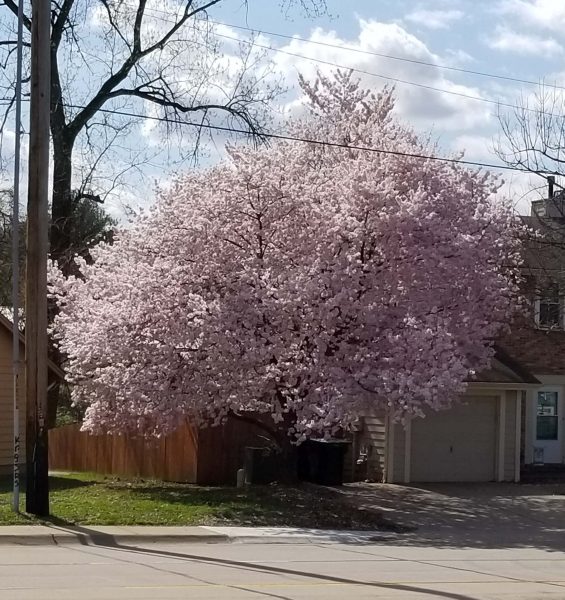
Kathy and Annette came for an overnight visit to celebrate my birthday. Luckily, I was going to count their visit day as my “official” birthday, because on my real birthday, everything went wrong. Nothing I did all day turned out right–it either took much longer than it should have because of interruptions and challenges, or it totally flopped. After Kathy and Annette arrived, however, everything was good. Even my traditional birthday Vienna Torte was a success. Kathy and Annette brought good vibes to my birthday weekend.

Before Kathy and Annette arrived, my birthday gift from Ted was delivered by FedEx. It came from Hana, Maui.



Kathy is far more artistic than I am, so I asked her to arrange the flowers in a vase for me. She looked at them and said, “Of course. That’s easy.” Meanwhile, my thought was, “Whew! I didn’t know where to begin.”
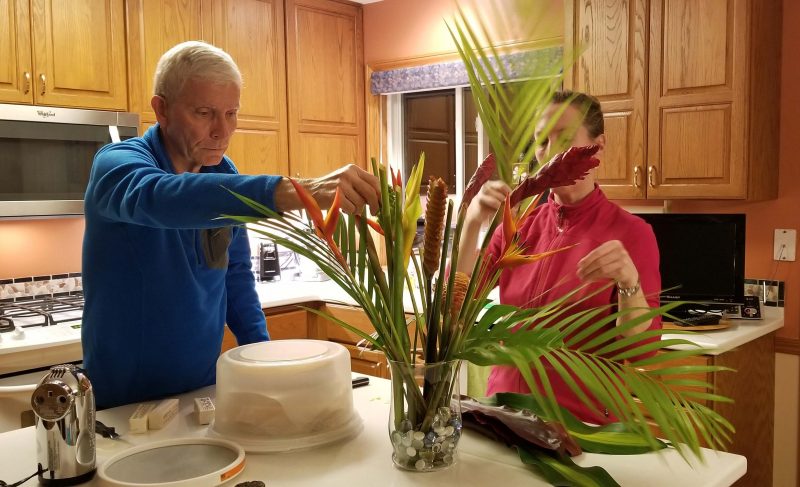
After a few minutes, Kathy’s efforts produced a beautiful tropical flower arrangement.

Afternoon temperatures were only in the 50s, but the wind was calm and the sun was warm, so we went e-bike riding. After showing Kathy and Annette how e-bikes work (not much different from regular bikes), Kathy and I went out first. We biked about 8 miles and then Kathy and Annette biked for another 6 miles while Ted and I put dinner (and Vienna Torte) on the table.
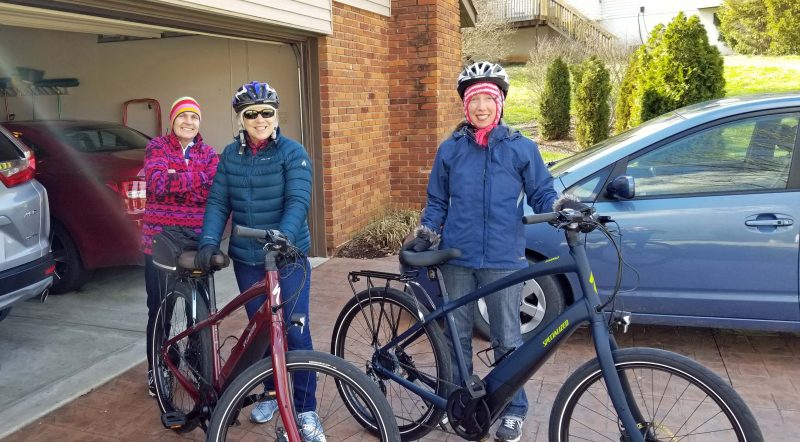
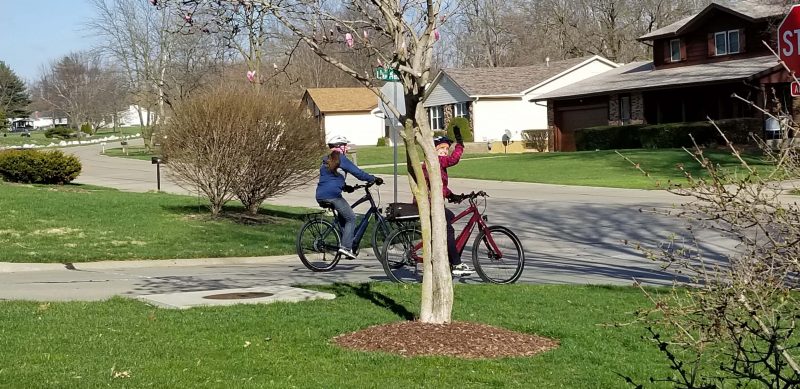
I always enjoy my birthday–even if it’s not on my actual birth date, and especially with good company and Vienna Torte.
On Thursday, it was a sunny 72 degrees; on Sunday, it was a snowy 34 degrees. This begs the question: Is it spring?
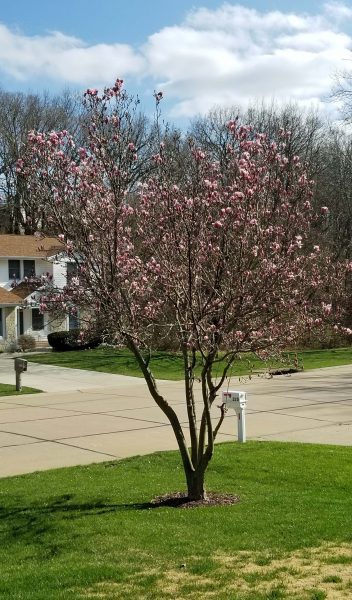
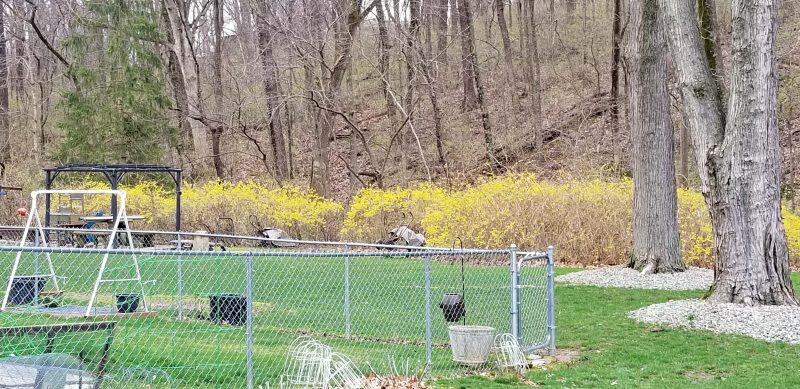
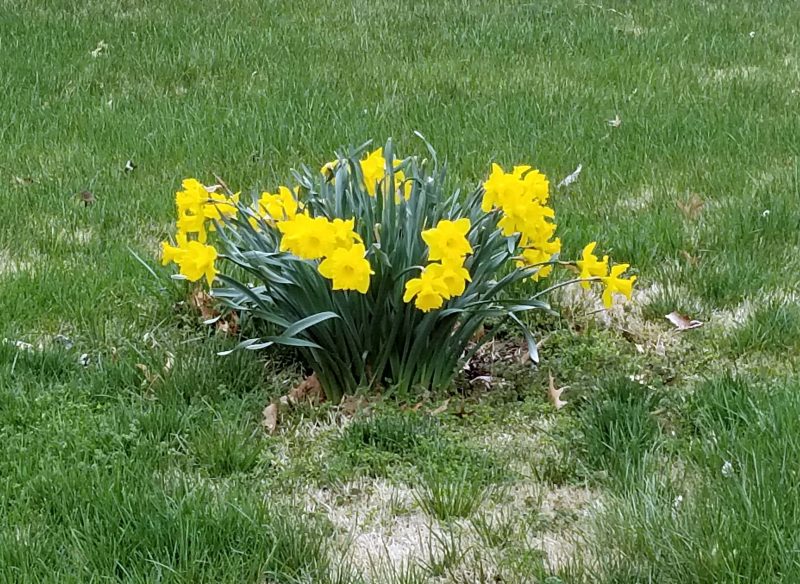
Or not?
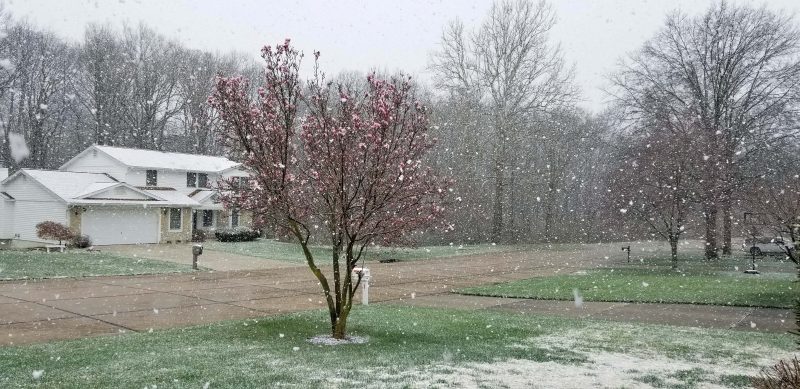
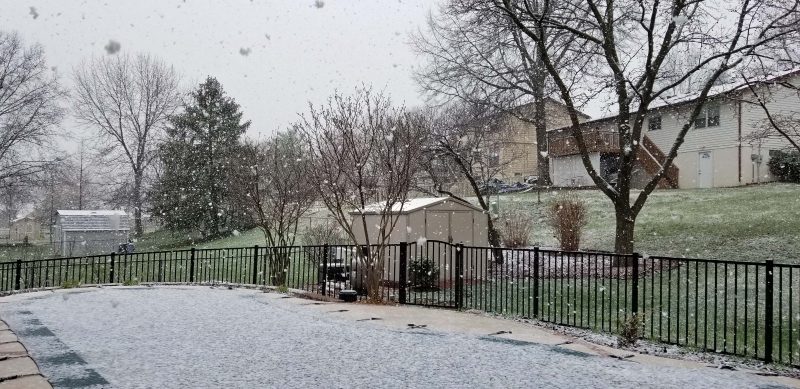
It was only a matter of time before people cooped up in their homes turned to Facebook to post Covid-19 memes. These were posted by Ted’s FB friends. I apologize for the cut-off letters, but that’s how they appeared on FB. Think of it as your challenge for the day to complete the words. With that said, are you ready for some laughs? Let’s go!
There’s a whole series on cats.
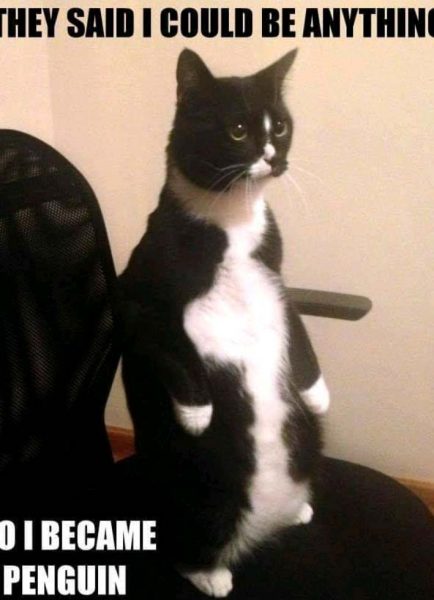
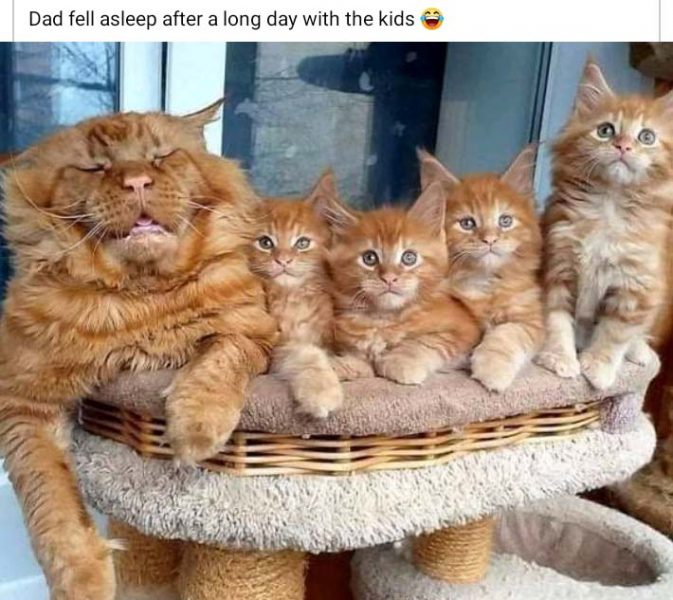



A few of the memes refer to Covid-19 in general.
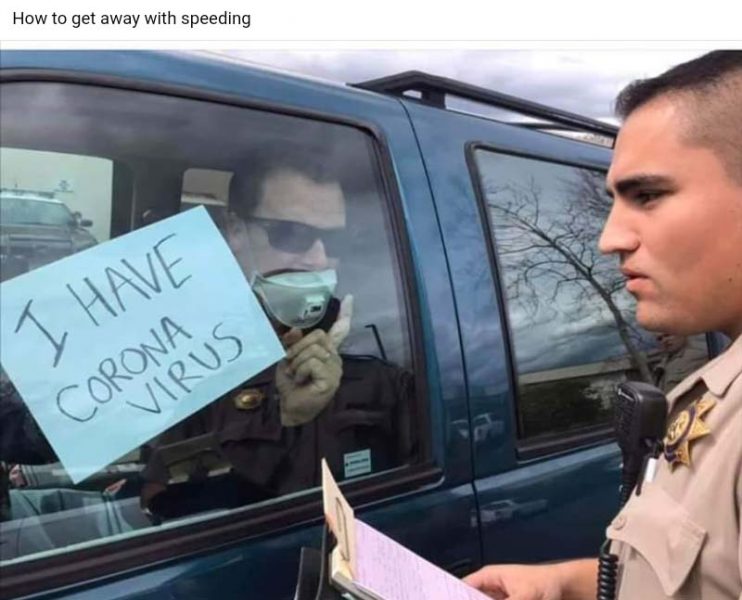
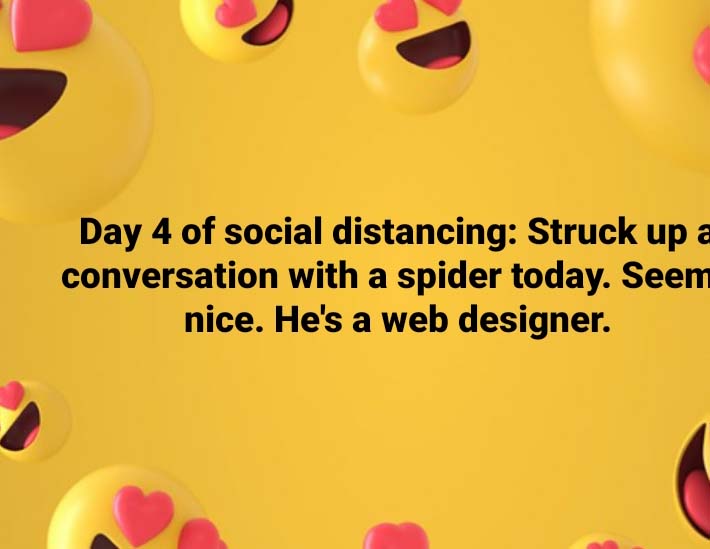
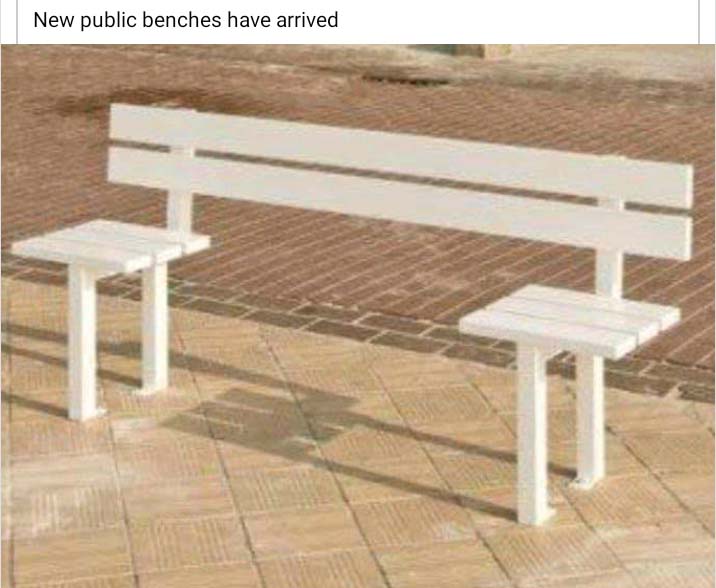

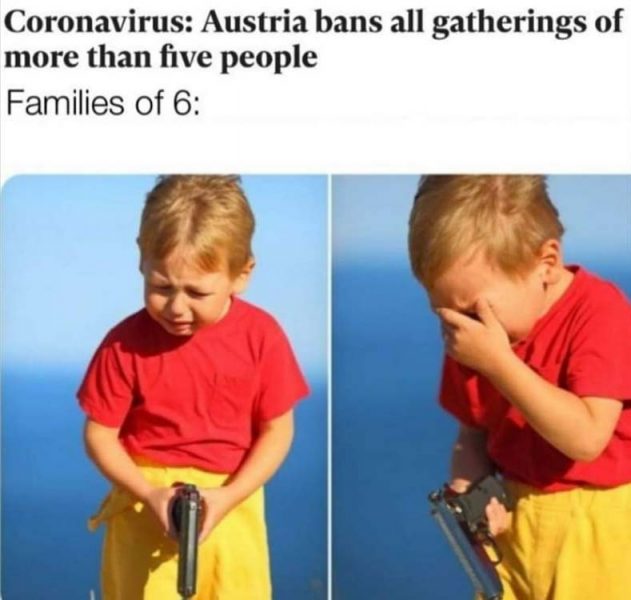
It’s no surprise that most of the memes address toilet paper hoarding and shortages.






I’ve been making cranberry-orange nut bread since 1970 and never had a problem until recently. Today, I discovered the reason. At some point, I re-copied the recipe and made two critical typos and one not-so-critical typo. (1) I typed 1/2 tsp. of baking powder instead of 1-1/2 tsp; (2) I omitted the 1/2 tsp. baking soda; and (3) I reduced the cranberries by half. Without 3/4 of my leavening ingredients, it’s no wonder my bread was so hard and dry.
I shared this recipe with many people over the years. If I shared it with any of my readers, check the recipe I gave you against the one below. This is the correct one.

I felt like making yeast dough today, so we have homemade cinnamon-raisin sweet rolls. Yum!
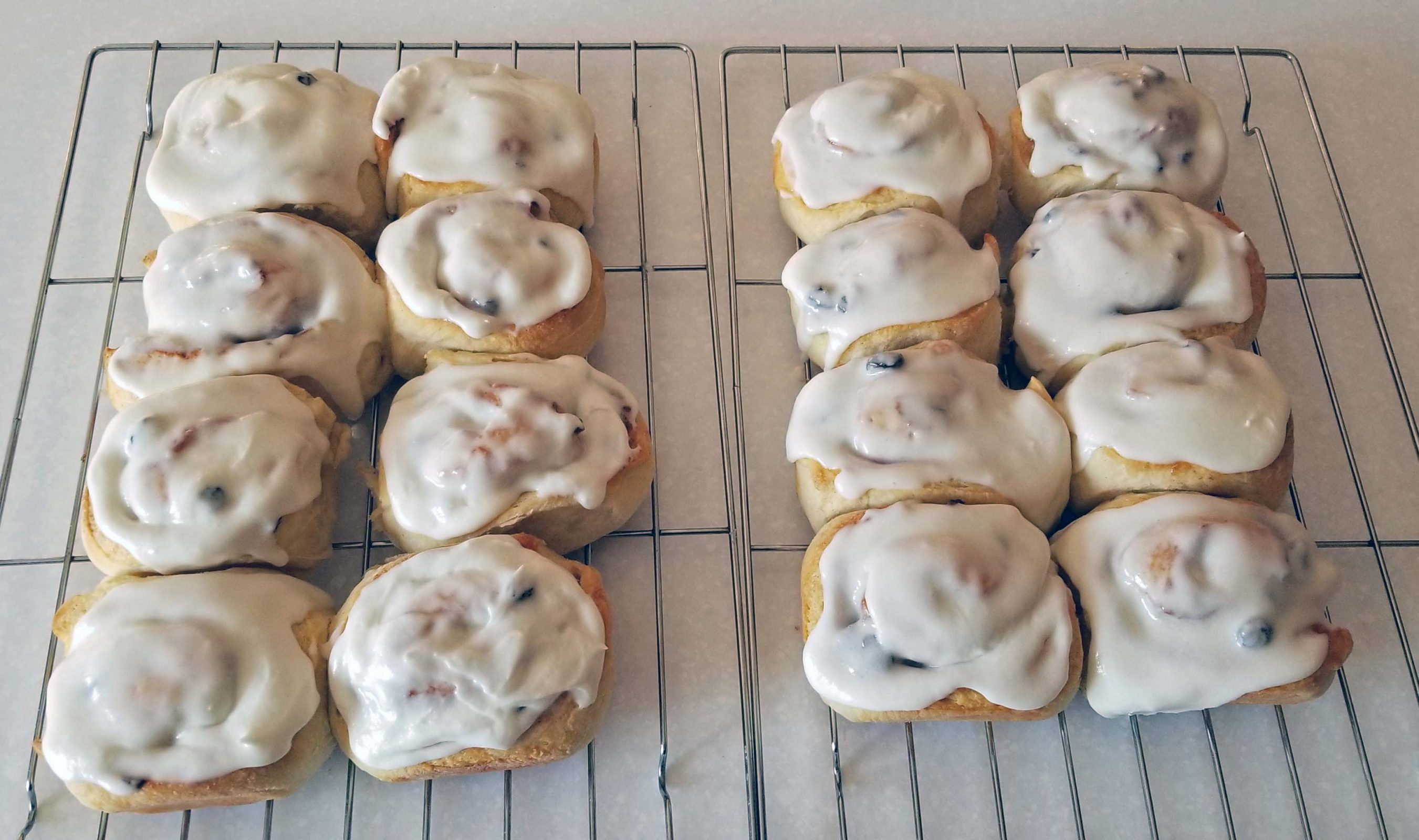
What’s wrong with this picture?
Hint: Zoom in on the green sticker on the license plate.
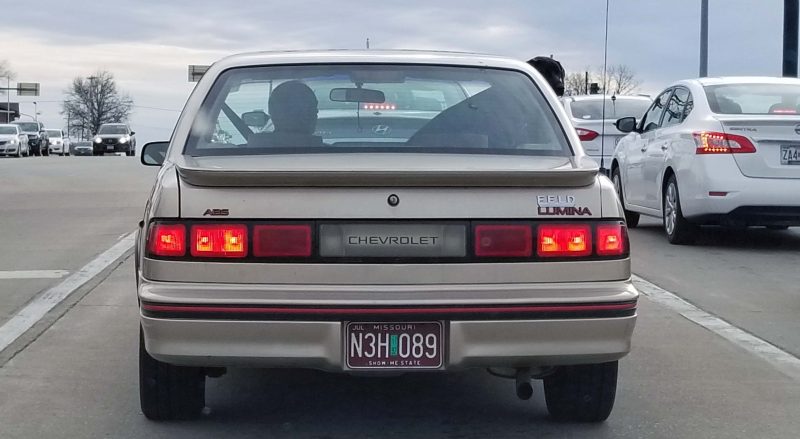
By not renewing his license plate since 1992, this guy has saved about $1,500. Not to mention that he didn’t have to stand in line at the DMV office.
One of Ted’s Facebook friends posted this. It’s from Adelaide, Victoria (Australia.) I guess our local Target store isn’t the only place that’s out of toilet paper.
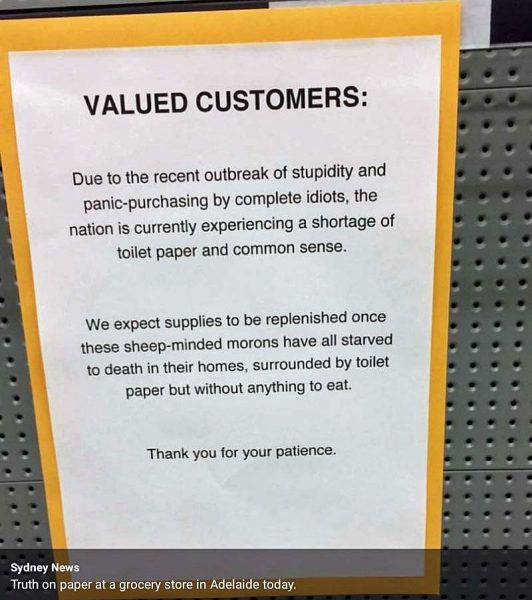
Shortages predicted to result from coronavirus-related production and shipping problems are causing people to horde supplies they think they will need. I’m not hoarding anything, but I get this, so I wasn’t surprised to see Wal-Mart’s shelves stripped of pain and fever-reducing medications, sterilizing mouthwash, and hand sanitizers. Yet, it seems like one product is being hoarded more than anything else.

That’s what Target’s toilet paper shelves looked like last night. Why are people hoarding toilet paper? One article I read suggested that buying lots of toilet paper might be making people feel like they have some control over the coronavirus, and therefore helps to calm them. If that’s true, there must be a lot of very calm people out there.
Normal humidity in St. Louis at this time of year is about 40-50 percent. Thirty percent would be considered very low humidity. (Information provided by in-house meteorologist.) On Sunday, our humidity was 16 percent at its lowest; 17 percent when I took this screenshot.
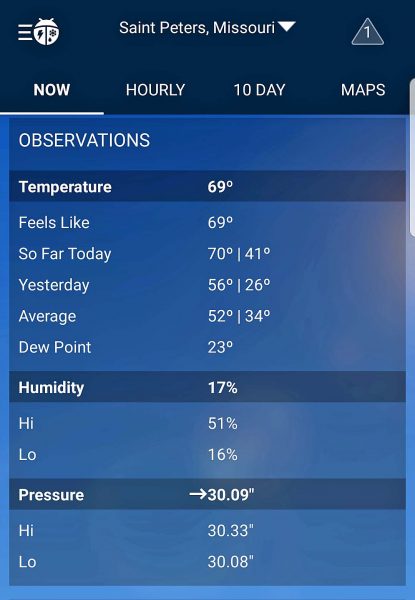
So what do you get in this area when the humidity gets that low? A fire weather warning! If it’s not one thing, it’s another. At least it wasn’t a spring tornado.
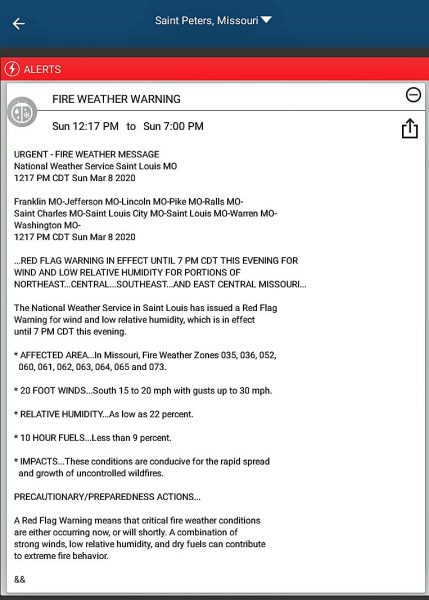
2020 U.S. census forms were mailed yesterday and will be in a mailbox near you soon. How will you respond?
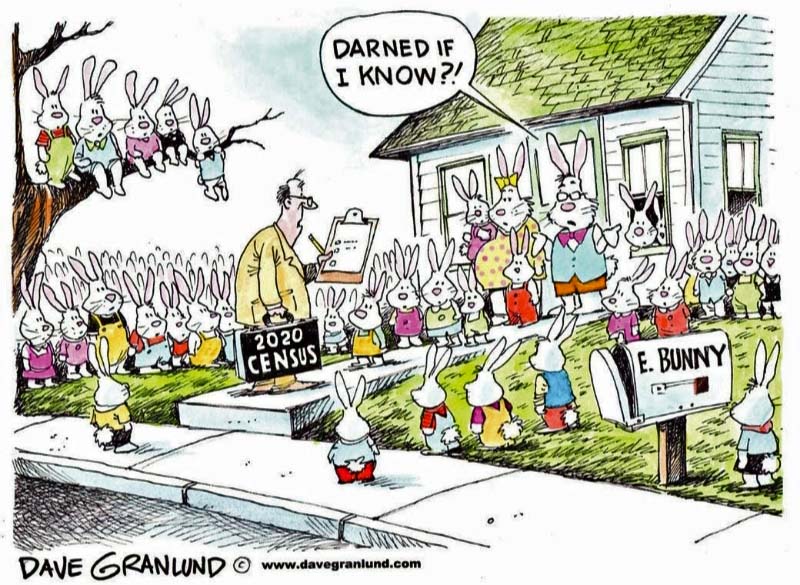
After deciding to get back to scanning old photos, I remembered two boxes of photos in storage–one from Ted’s family and one from mine that we received after our parents died. We took our respective boxes and went to work last night. Ted had more pictures to sort because I had already winnowed mine a little bit many years ago. It’s really interesting to go back through family history and to remember things that happened in the way back.
This four-generation picture taken on my mother’s first birthday, is one of the oldest family photos I have. From the left, that’s my grandpa (Lorenz Lorenzen), my mother (Violet), my great-great-grandmother (Eliza Lorenzen, paternal grandmother of my grandpa), and my great-grandfather (Peter Lorenzen, father of my grandpa and son of Eliza Lorenzen).
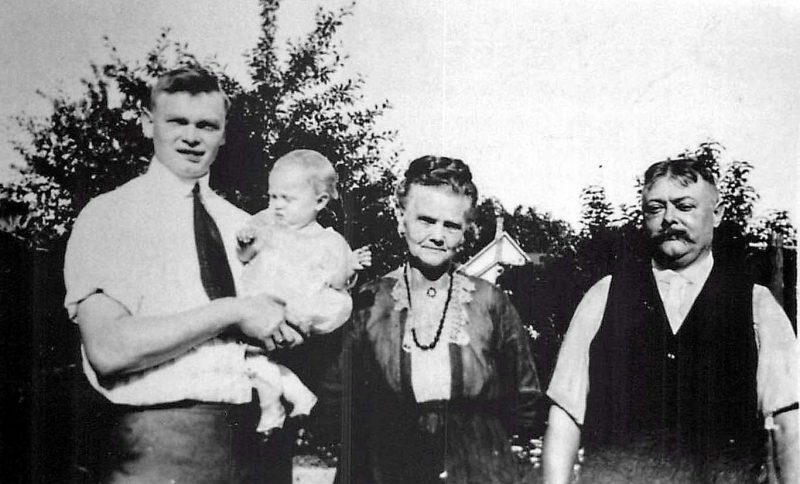
Jumping to my dad’s side of the family, that’s my great-grandmother, Johanna (Josie) Dell with her three children: (L>R) Gladys, Philip, and Mabel (my dad’s mother). Great-uncle Phil had an apple orchard just north of Hingham, my hometown. Grandma Dell lived about a hundred feet up the street from us and I remember walking up to visit with her when I’d see her sitting on her porch. She always seemed to have a cookie for me. She died when I was six years old.
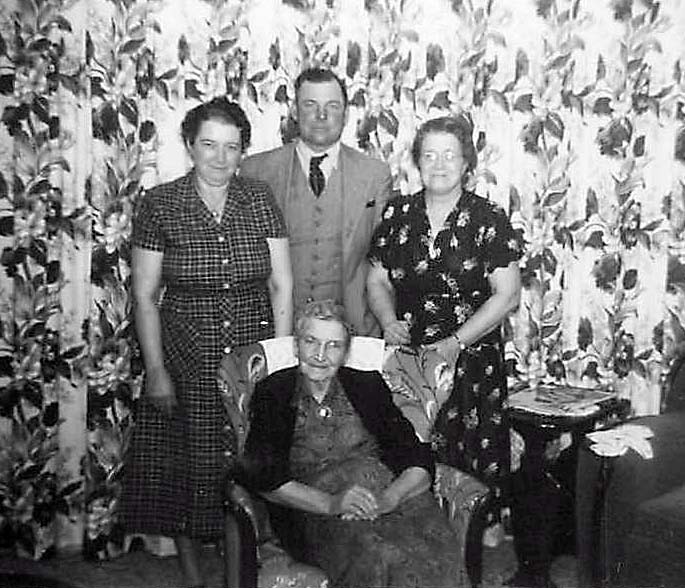
Here’s Great-grandma Dell with her great-grandchildren in 1950. I hope I live to see this many great-grandchildren. That’s me and my brother Denny in the coaster wagon. My cousin Carol is the oldest and is standing right in front of Grandma. Carol died two years later of meningitis. My Grandma Soerens buried two grandchildren before she died–Carol and my four-year-old cousin Lori, who was killed by a hit-and-run driver. My Grandma Lorenzen buried her eight-year-old son (who died of a ruptured appendix), a stillborn grandson, and my oldest brother (Denny, who died at 27 in an Air Force plane crash). Ted and I are fortunate that our children and grandchildren are all healthy and with us.
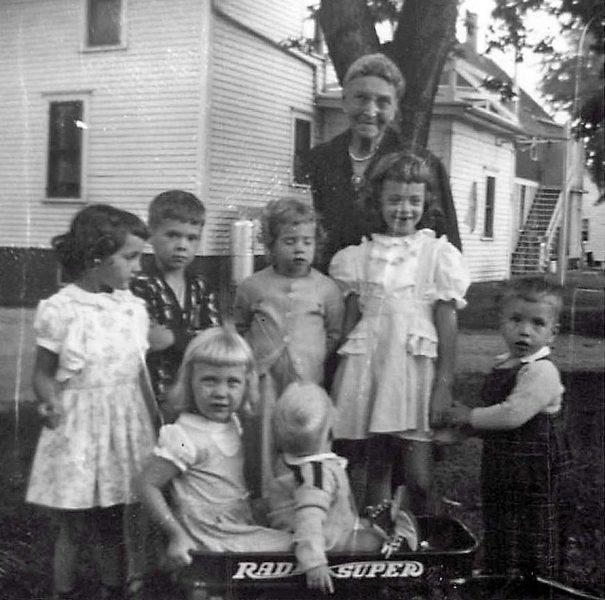
Grandparents (including Ted and me) love to have pictures of themselves with their grandchildren. Here are Grandma and Grandpa Lorenzen on their 35th wedding anniversary with their grandchildren. I’m the oldest, in the center, and my brothers are to the right of me in the photo–Tom, Steve, and Denny. Russ is the little guy on the right at the table.
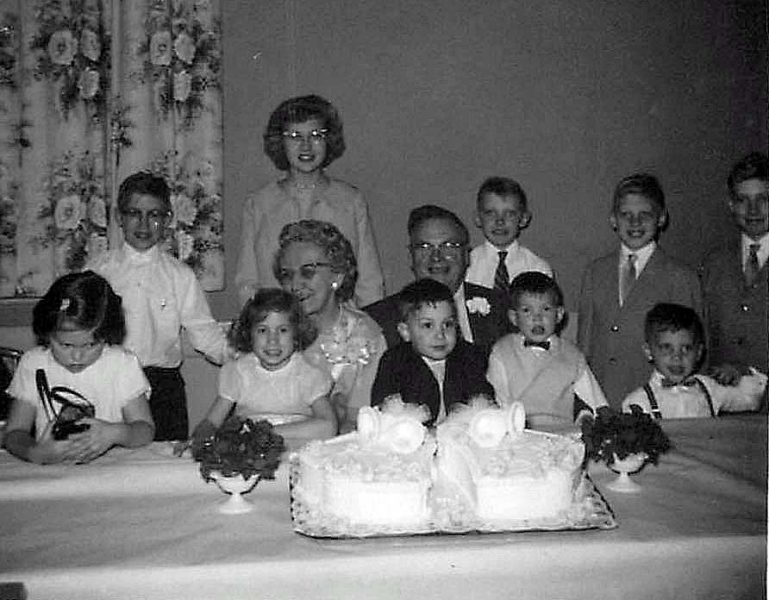
There were some fun pictures of siblings in my pile. Here’s my dad (back center) with four of his five siblings. There was one more to come.
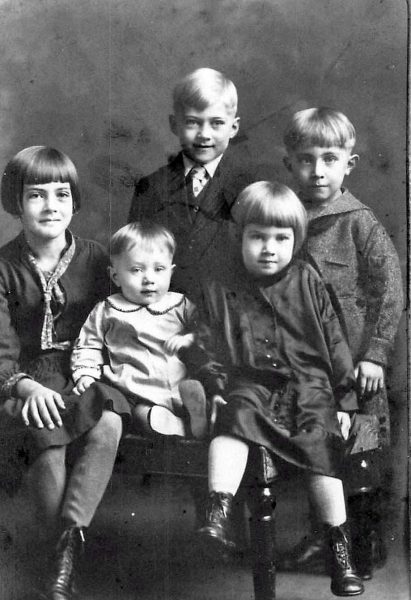
As the older sister, I tried to help mom with this photograph by turning Denny’s head toward the camera. He didn’t like it.
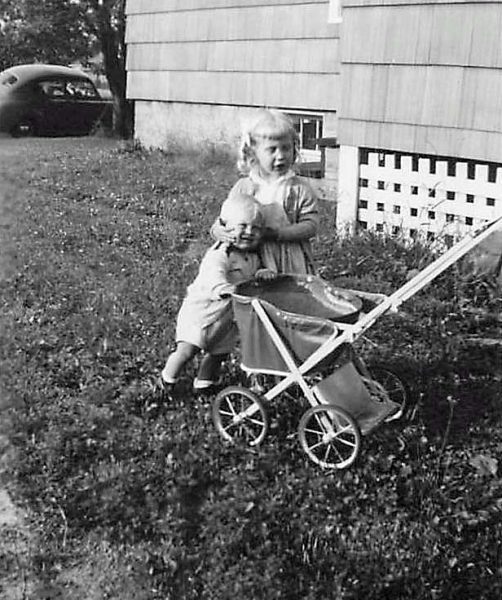
This is Denny, me, and Steve. That’s not our dog, so it must be an early photo-bomber.
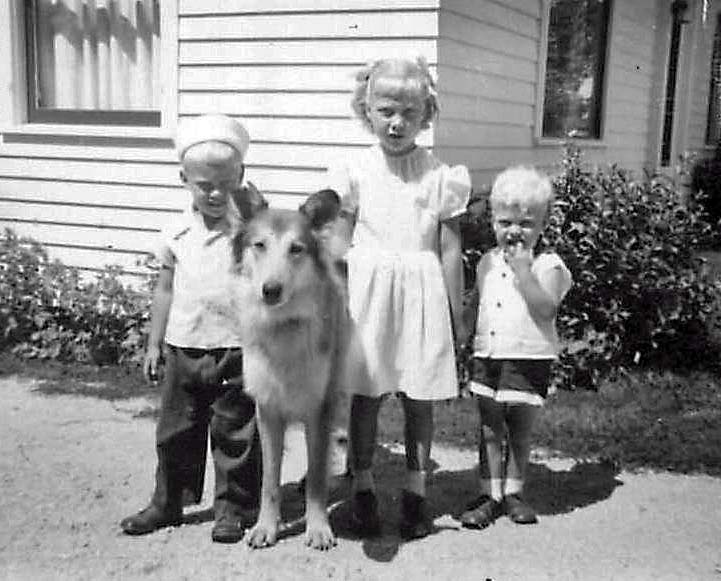
My dad built this little shed to store our trikes, bikes, wagons, and other outdoor toys. “Hey, kids! Wanna paint the shed?” That’s Steve and me, hard at work.
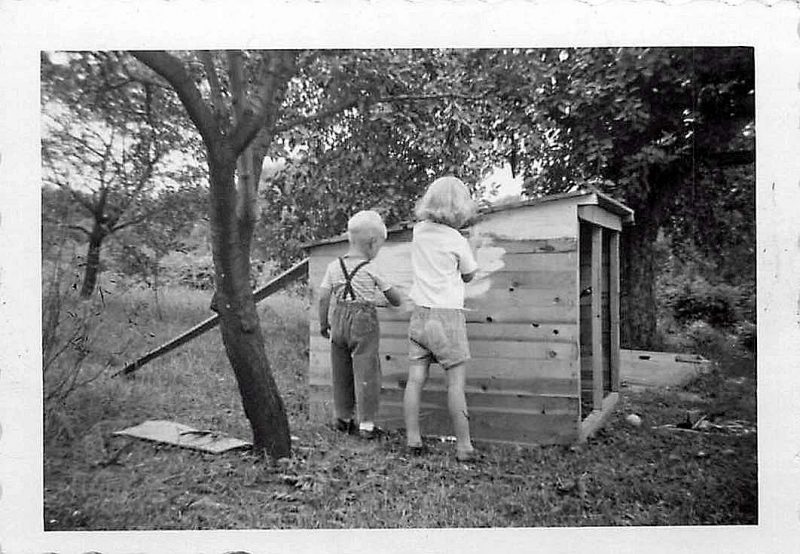
My mom took this picture of Dad, Steve, Denny, and me, but she never liked it. I think it was supposed to be a “planting and greening of the earth” moment, but she always said it looked like we were trying to eke out a living on a hardscrabble farm. Those are our raspberry bushes and cherry trees in the background.

Maybe modeling runs in the family. Here’s Grandma Lorenzen, Mom, and me struttin’ our stuff.

In the 1950s, the majority of married women did not have full-time jobs. Apparently, our homemaking training started early. Here I am, at about three years old, ironing my doll clothes in the left picture. The iron has a cord and actually warmed up a little bit. That’s why I’m testing it with my hand. On the right side of the left photo, you can see my doll, patiently waiting in her buggy for freshly ironed clothes.
In the right photo, I’ve got my household set up on the front porch. That’s Steve in the doll crib. Note that there’s a dresser for my doll’s clothes, a cupboard with doll dishes in it, a table and chairs, and a buggy for the baby doll. The two boys in the center are our neighbors; the girls might be their nieces who lived in Florida and visited every summer. (The boys had a much older brother and sister.)
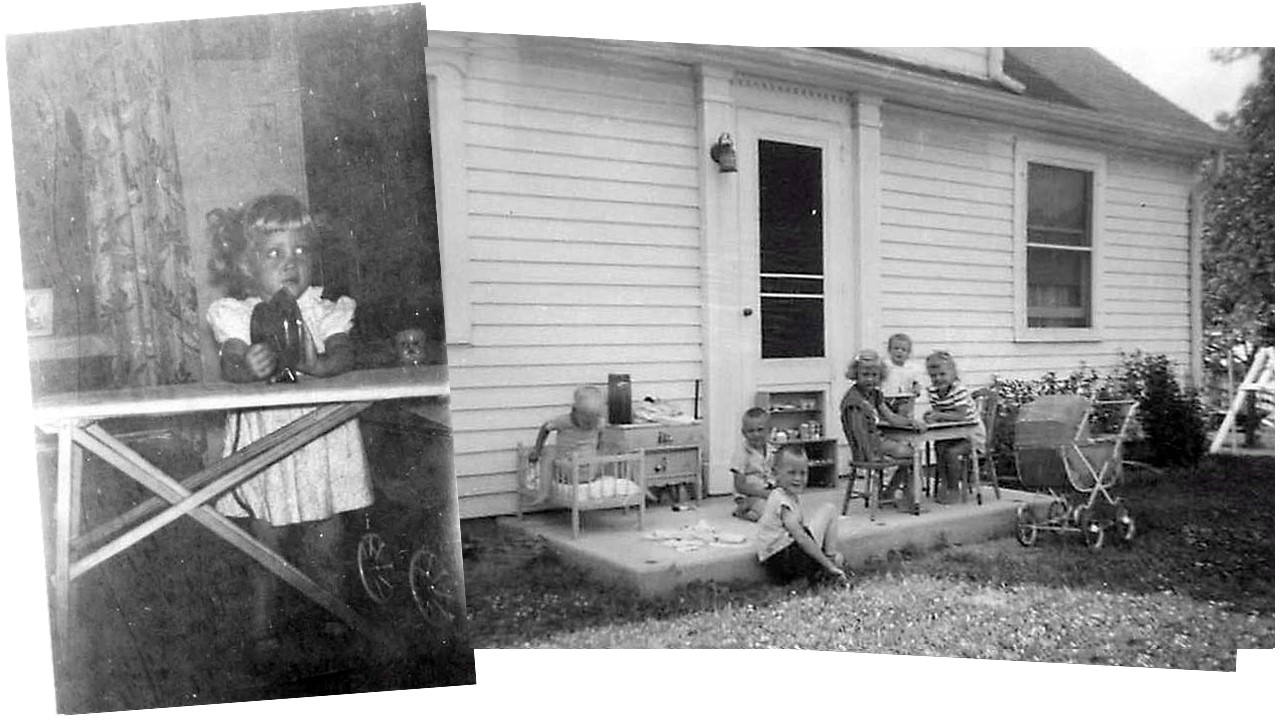
I joined the Hingham Wide-Awakes 4-H Club when I was ten years old. One of my “projects” that I worked on each year was sewing (still learning to be a housewife). I’m eleven in the photos below and I’m modeling the clothes that I sewed and entered in the County Fair. The pictures went into my 4-H Record Book that I completed each year to describe my year’s club activities.

Another 4-H activity was demonstrations. We gave them at meetings and there was also a county-wide demonstration contest with cash prizes. Here I’m practicing my demonstration on how to make a scarf. It’s more documentation for my record book.

Since this was a pile of my family photos and since I was my parents’ first baby, there are a lot of pictures of me. Here are a few. I’m probably under a year old and enjoying my first winter. If the baby keeps falling off the sled, put her in a cardboard box.
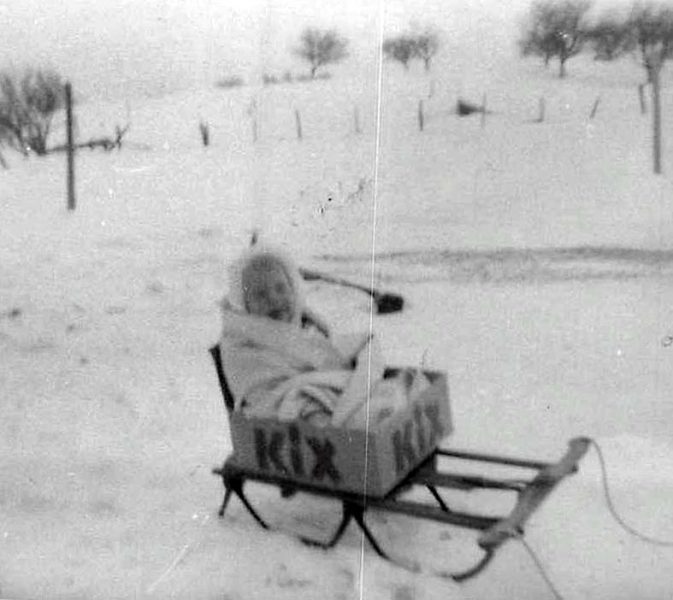
My mom (and everyone else) had a wringer washing machine when I was little, and I used to “catch” the pieces of laundry as they came through the wringer. On my third birthday, my hand got caught in the turning rollers of the wringer and they scraped the skin off the back of my hand. All of my third birthday pictures show a big splotch of mercurochrome over the injury. Mercurochrome didn’t sting like iodine, but it actually had a little mercury in it, so it’s no surprise it was later banned.
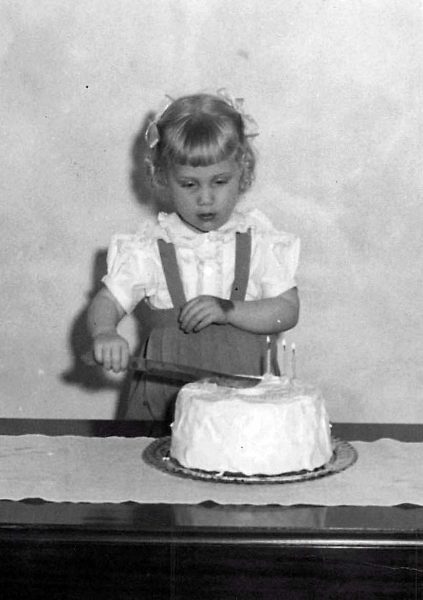
I tried out for and got a part in most of the high school plays. Here I am, hoopskirts and all, in Jane Eyre. The home ec classes made the play costumes; the shop classes made the sets.

The last picture from this batch of historic photos shows me in my band uniform. I played first chair clarinet and I was also in the pep band. Pep band got me free admission to all the home games. Good times! Knowing my mom and the way she tried to make her photos look good, I suspect she removed the corner table to take this picture.

Ted and I made a Wal-Mart run and were surprised to see how many empty shelves there were in the store. Every department had gaping empty shelf spaces. Is the coronavirus affecting shipments and supplies? Are people buying and hoarding things faster than Wal-Mart can re-stock them? We don’t know, but it was a weird Wal-Mart shopping experience. Some of the empty shelves we saw were in groceries, . . .

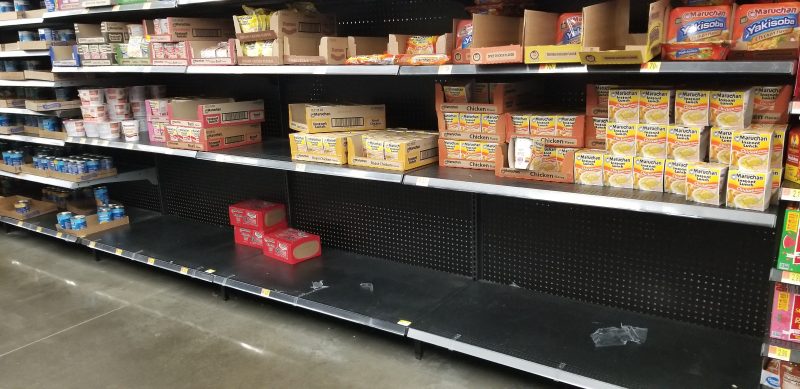
kitchen utensils, . . .

pens and markers, . . .
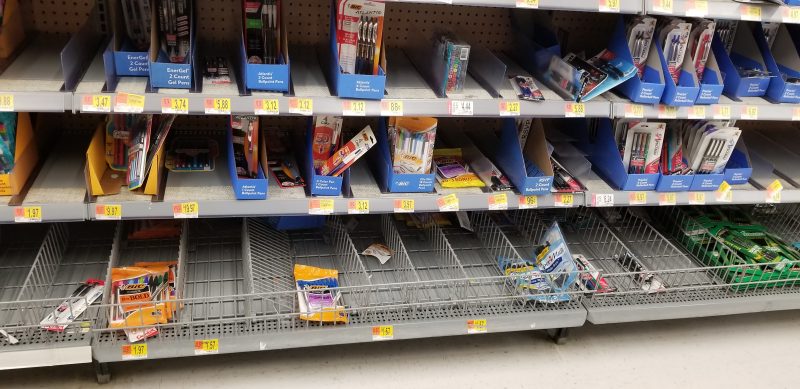
pain-killing and fever-reducing medications, . . .
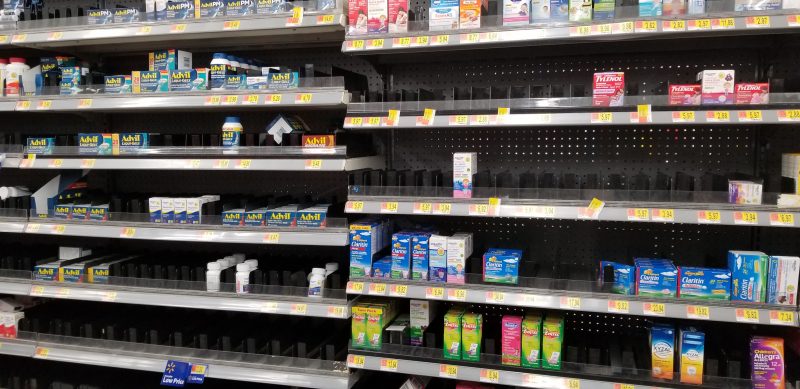
and germ-killing mouth washes.

I started scanning selected pictures from old photo albums and posted a few of them on this blog in August, October, and December 2018. Several months ago, one of my readers (name begins with “J”) asked when I was going to post some more old photos. With reader demand like that, I decided it was time to go through some more photo albums. Last night, I picked up where I left off more than a year ago. Let’s start with the big project of 1981.
Ted and I moved from Washington, D.C. to Missouri in July 1973, just six weeks after Kathy was born. Here’s where we lived in St. Charles.
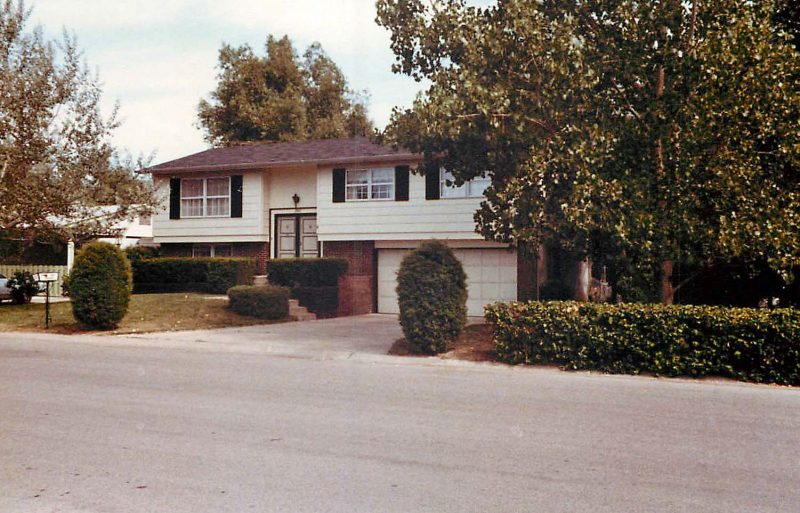
We had a deck over the patio in the back of the house. We frequently used both levels, depending on whether we were looking for shade or sun. The patio included a gas grill / oven that was connected to the gas line for the house. I used it to cook roasts, casseroles, etc. and sometimes, when Ted came home after an evening shift, he’d grill hamburgers for the two of us out there after midnight. The galvanized watering tank was a popular style of backyard swimming pool in this area in those days. Question: how did we get it home with the Opel?

The back yard dropped sharply down to two drainage creeks. Ted and I built those two redwood bridges so we could access those parts of our yard. The swimming pool and swing set were in the “middle” back yard, and the garden was across the second creek in the “back” back yard. (The back yard against the house was the back yard.) This was a pretty view from the deck in the summer, especially when the garden was in full growth.
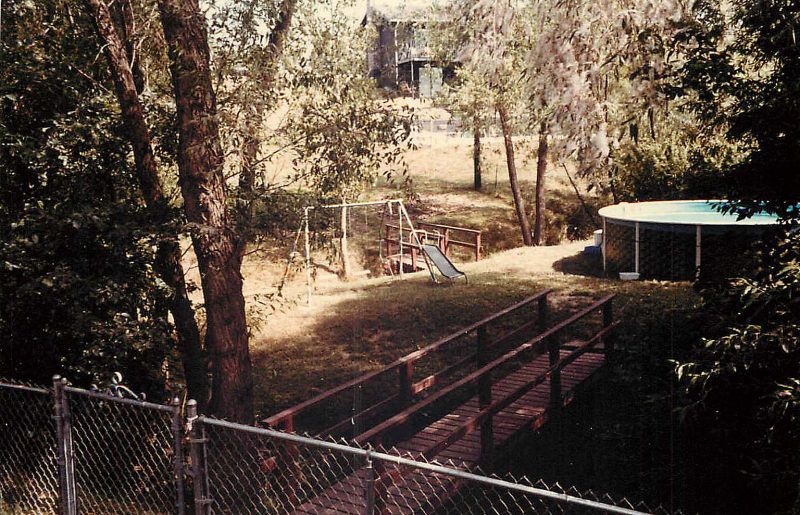
Thom and Kari were born while we lived in St. Charles and we needed a larger house. In 1979, we moved to St. Peters and bought our current house. The sale closing date was 7-9-79. The subdivision was very new and ours was the first house built on this plat. The house and the neighborhood were both undeveloped and stark when we moved in. I could wave to our nearest neighbor in the distance if we both got the mail at the same time and saw each other. For several years, we lived with constant construction noise as other families built houses in the subdivision.
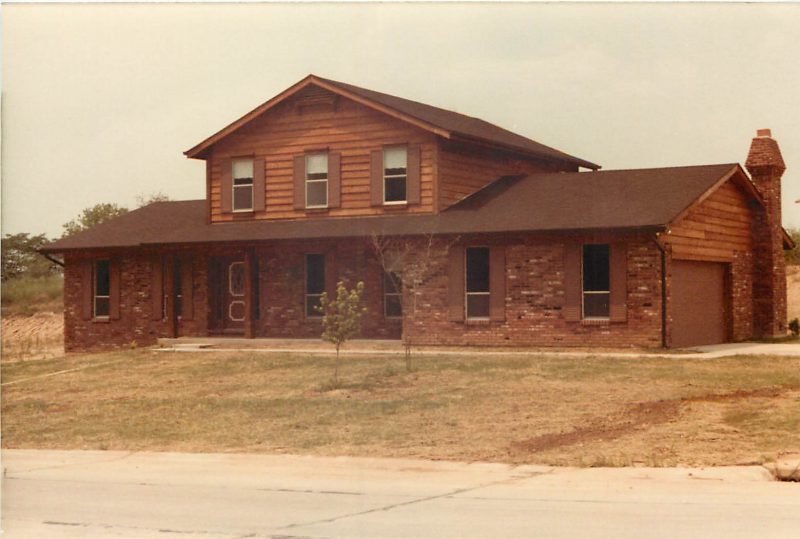
The deck furniture and the watering tank swimming pool made the move with us. We used that watering tank pool for a week or two before we joined the subdivision swimming pool. Ted and Jeff walked to the pool (five vacant lots down the street) to see if we could buy a pro-rated membership for the remainder of the summer. I’ll never forget the look of pure joy on Jeff’s face when he and Ted came home with a family pool membership. We all put on our swimsuits and headed for the subdivision pool. Next question: How did we get rid of the watering tank?

In Spring 1981, we added a pergola over the patio so we could get some shade from the hot summer sun and sit outside. A local lumberyard had an architect on staff at no cost if we bought the lumber there. He came to our house and then drew blueprint plans (no computer plans in 1981) for us to use, including every detail down to how many lag bolts and washers we’d need. I remember showing them to someone once and the guy remarked, “You even have funny papers for your patio cover?!” In the photo below, the rough-sawn cedar lumber has been delivered and we’ve started working. Ted is admiring the good job we did affixing the first triangular support bracket to the brick on the house beside the back door. That took us an entire day! We finished the other two supports on the house in much less time.
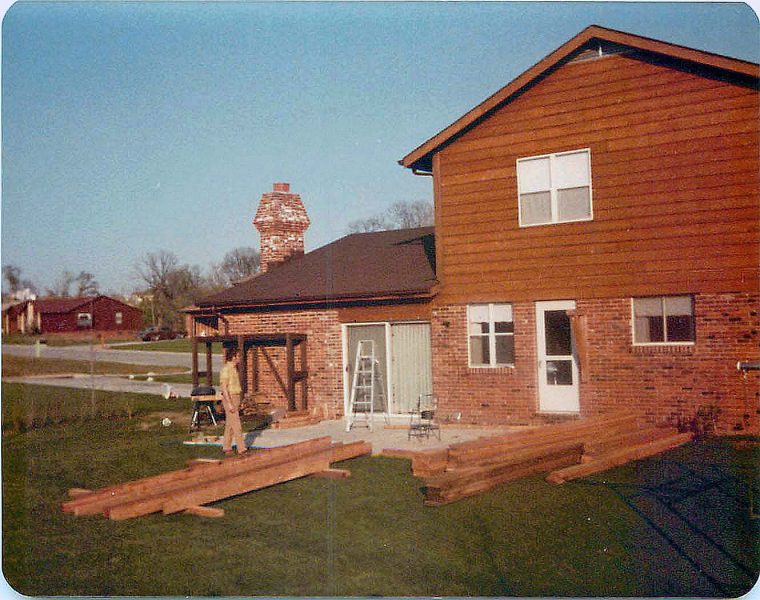
It looks like we have sufficient bracing for the uprights. Except for lifting the three 18-foot 4 x 12 solid cedar beams projecting outward from the house, we did all the work ourselves. The beams weighed over 500 pounds each and it took Ted and two neighbor men (we had a few neighbors by 1981) to raise them onto the upright posts and the support brackets on the house.

One of our new neighbors had railroad clamps that he lent us. Those are the metal poles projecting above the top of the pergola, They made it possible to clamp the crossbeams to the layer below and hold them in place while we pounded in the nails.

Ted gave me the honor of putting in the last lag bolt. When we finished, the entire structure was solid. The architect told us that “sandwiching” the upright 4 x 4 posts with 2 x 6 boards would keep the 4 x 4s from warping. They never warped, and the pergola never wobbled.

The pergola is all stained and finished, and it looks good. After 30+ years, we had to replace the original, but we used the same blueprints because we like the design that much. The second time around, however, we could afford to hire a professional carpenter. I honestly don’t think his work was any better than ours.

Here’s how the house looked in August 2018, thirty-nine years later. When we bought it, it was at the top end of our budget, but we both loved it and decided to go for it. We’ve never been sorry and we still love it.


As University of Wisconsin alumni, Ted and I receive the UW magazine. We each found an especially interesting article in the current edition. My “find” is a philanthropic educational initiative. I know a number of universities have similar programs, and I’m proud that my alma mater is one of them. (FYI, Bucky Badger is the UW mascot, thus “Bucky’s Tuition Promise.”)

Ted’s favorite article is cuter and more fun.
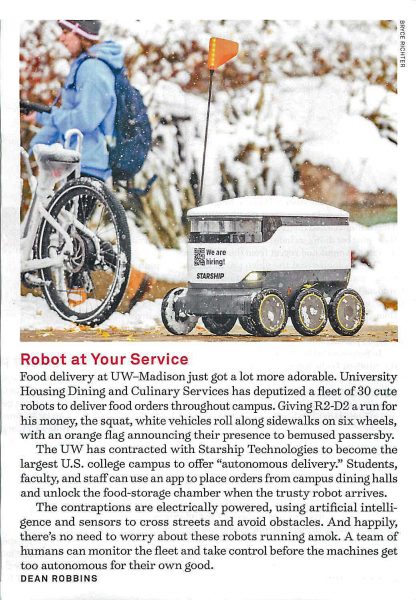
So you think working for the federal government is boring? Ted saw an article in Fedsmith.com titled “The 9 Coolest Federal Government Jobs.” The author states that there are federal employees around the world doing work that “would put the most fascinating private sector jobs to shame.” He lists the following coolest federal government positions.
Park Ranger (National Park Service) Locate your office in Yosemite National Park, the Appalachian Trail, or Independence Hall and choose from firefighting, security, search and rescue, etc.
Aerospace Engineer (NASA) Research, design, and test systems that go into spacecraft.
Foreign Service Officer (Department of State) Represent the U.S. in Nassau, the Bahamas, or other unique locales.
Archivist (Smithsonian Institute) Collect, care for, and organize historic artifacts, photographs, documents, etc.
FBI Agent (Federal Bureau of Investigation) Investigate, prevent, and put an end to illegal activity to uphold the Constitution and protect the American public.
Meteorologist (National Weather Service) Forecast weather, collect data, and work with natural disasters, climate change, and saving lives while studying the complex inner workings of Earth’s atmosphere.
Pararescue Airman (USAF) Make dramatic rescues in a variety of unique scenarios such as evacuating sinking planes or retrieving astronauts after a water landing.
Fish and Wildlife Biologist (U.S. Fish & Wildlife Service) Protect and manage native animals, especially those that are endangered or threatened.
Securities Compliance Examiner (SEC) Keep Bernie Madoffs and Enrons from undermining the U.S. financial system through interviews and investigations to prevent fraudulent activities.